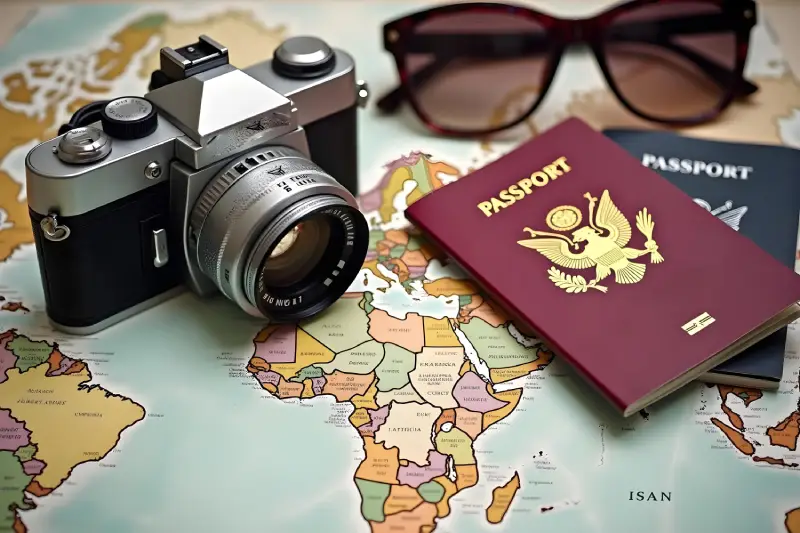Traditional Music and Dance Across African Nations
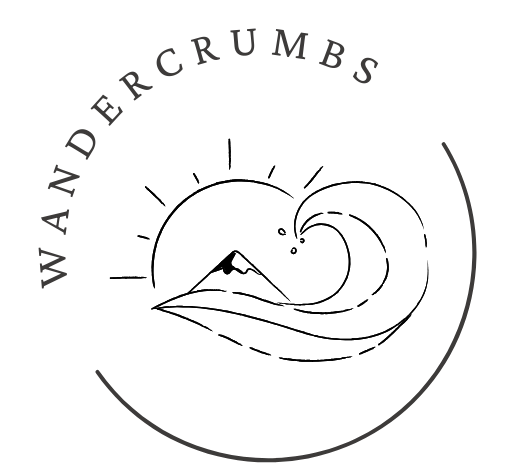
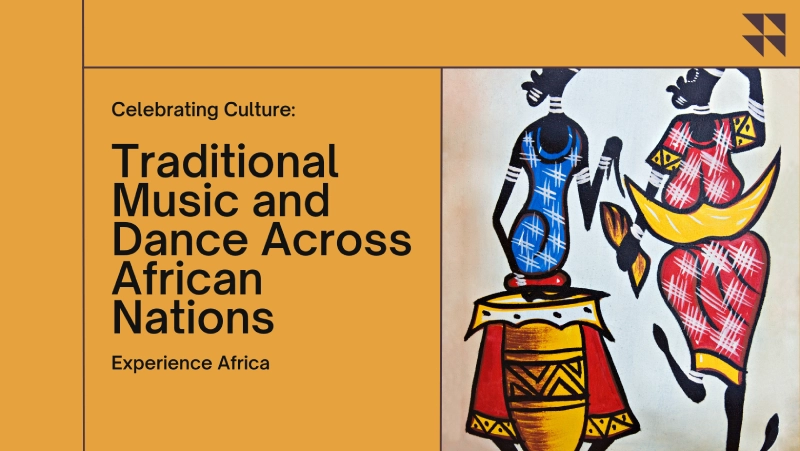
Table of Contents
ToggleAfrica is incredibly diverse, with a rich tapestry of traditions, languages, and customs. Its traditional music and dance play a crucial role in expressing the diverse identities and histories of the continent’s many countries. From the energetic rhythms of West Africa’s djembe drums to the soul-stirring beats of South Africa’s gumboot dancing, each region has its unique artistic expression.
Africa is home to countless ethnic groups, each with its own customs and beliefs. Within each nation and community, there are even more unique differences, creating a complex and fascinating mosaic of cultures. To better understand African traditional music and dance, let’s explore some famous examples from different regions across the continent.
West Africa:
West Africa is renowned for its rich cultural variety, and traditional music and dance are essential for conveying the histories and identities of the continent’s many ethnic groups. Here are some highlights from a few West African countries’ musical and dance traditions:
Nigeria
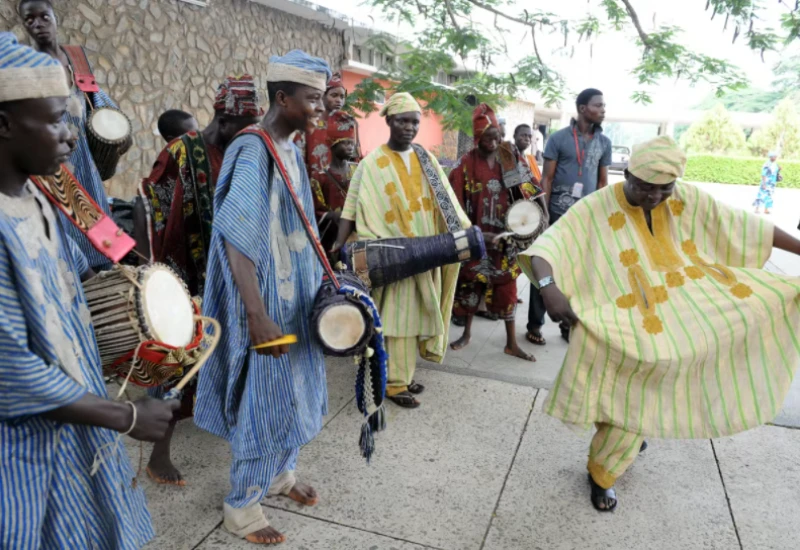
Yoruba Music: Yoruba music is all about vibrant rhythms and melodies. It’s deeply rooted in the culture of the Yoruba people. With a wide range of percussion instruments, like the iconic “dùndún” and “bàtá” drums, Yoruba music has a special place in the rich musical history of the Yoruba community. From joyous festivals to sacred rituals and ceremonies, traditional Yoruba music adds a whole new dimension to these cultural events. It creates an immersive experience that resonates with both participants and onlookers. The intricate beats and soulful melodies of Yoruba music truly captivate the senses and transport listeners to the heart of Yoruba culture and traditions.
Highlife and Juju: Nigeria, a country renowned for its rich musical heritage, is home to two famous music genres: Juju and Highlife. Juju, a vibrant and influential genre, finds its roots in Yoruba music and embodies a fusion of traditional African rhythms with Western musical elements. Highlife, on the other hand, is characterized by its infectious melodies and uplifting rhythms, blending indigenous Nigerian sounds with Western instruments and influences. These two genres have played a significant role in shaping the Nigerian music scene, captivating audiences both locally and globally with their unique and captivating sounds.
Ghana
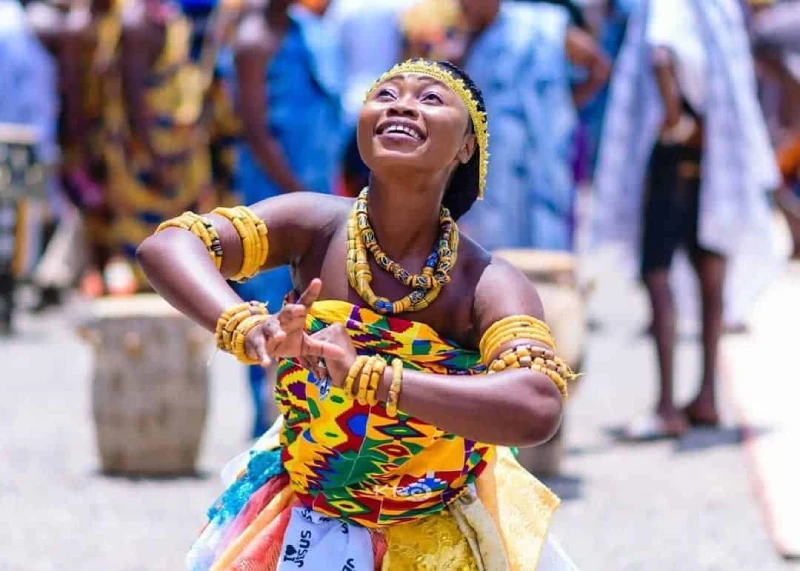
Highlife: Ghana has a rich and vibrant history of Highlife music, much like its neighbouring country, Nigeria. Highlife, a genre that originated in Africa, is known for its lively melodies and infectious rhythms. It emerged in the early 20th century and quickly gained popularity, blending Western instruments such as guitars, saxophones, and trumpets with traditional African rhythms.
Adowa Dance: Adowa is a traditional Ghanaian dance form that is often performed during festivals and funerals. It is characterized by graceful movements, intricate footwork, and rhythmic handclaps. The dance holds deep cultural significance and is a powerful expression of Ghanaian heritage. The energetic beats of traditional drums provide the perfect accompaniment to the dancers, creating a captivating spectacle.
Azonto Dance: In recent times, Ghana introduced the world to the vibrant and infectious dance style known as Azonto. This modern dance form gained international recognition and popularity through its fusion of traditional Ghanaian moves with contemporary urban dance elements. Azonto is characterized by its upbeat tempo, intricate footwork, and playful gestures. It has become a global phenomenon, with people from all around the world embracing and dancing to its infectious rhythms.
Senegal
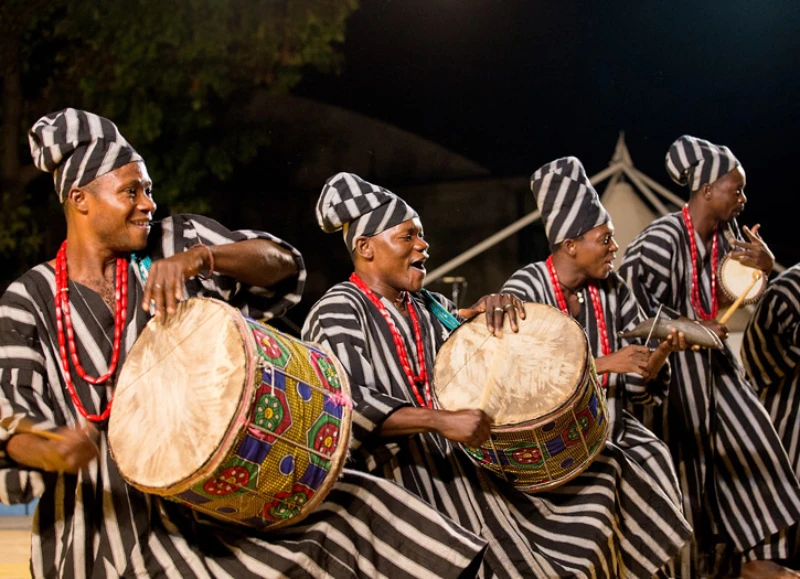
Wolof Sabar Dance: Sabar is a traditional and vibrant dancing culture deeply rooted in the Wolof people of Senegal. This captivating dance form showcases dynamic and energetic movements, accompanied by the rhythmic beats of “sabar” drums. The dancers skillfully execute intricate footwork and body isolations, expressing the rich cultural heritage and joyful spirit of the Wolof community.
Mbalax Music: Mbalax is an electrifying music genre that originated in Senegal and gained worldwide recognition through the iconic Senegalese artist Youssou N’Dour. This compelling music style blends contemporary instruments, such as guitars and keyboards, with the pulsating rhythms of traditional Senegalese percussion instruments, creating a unique and energetic sound that instantly captivates listeners. Mbalax music reflects the cultural diversity and vibrant spirit of Senegal, serving as a celebration of life and a powerful means of artistic expression.
Mali
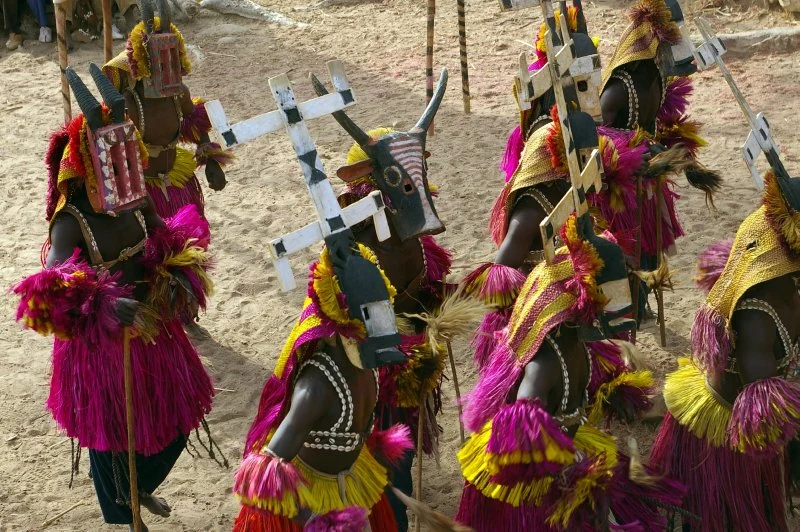
Mande Music: The Mande people of Mali have a fascinating and vibrant musical history that spans generations. Their musical traditions are deeply rooted in their cultural heritage and are characterized by the enchanting sounds of instruments such as the xylophone and the mesmerizing 21-string harp-lute, known as the kora. One of the key figures in Mande music is the Griot, a revered role filled by traditional storytellers and musicians. Griots play a vital role in preserving and transmitting the rich musical and cultural legacy of the Mande people, ensuring that their traditions continue to thrive.
Bambara Dance: Within the diverse ethnic groups of Mali, the Bambara people have their own distinctive dances that accompany their traditional music. These dances are a vibrant expression of their unique cultural identity, reflecting their history, beliefs, and values. The rhythmic movements and intricate choreography of Bambara dances not only entertain but also serve as a powerful form of storytelling, communicating narratives and emotions that have been passed down through generations. Through Bambara dance, the community comes together to celebrate their heritage and create a sense of unity and belonging.
North Africa:
The traditional music and dance of North Africa reflect the region’s complex cultural fabric, formed by Arab, Berber, and other indigenous influences. Here are some highlights from a few chosen North African countries’ traditional dances and music:
Egypt
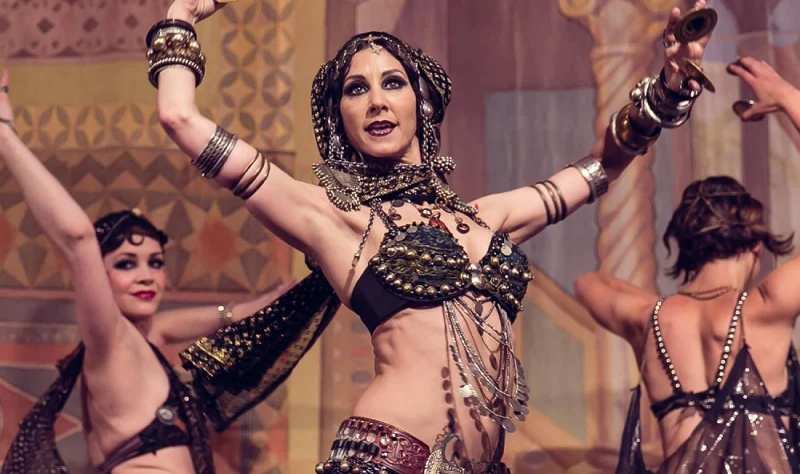
Arabic Music: The rich cultural legacy of Egypt is greatly enhanced by the unique scales and captivating melodies of traditional Arabic music. This music is brought to life through the enchanting sounds of instruments such as the tabla (drum), qanun (zither), and oud (lute). Each instrument adds its distinctive voice, creating a symphony of harmonious melodies that transport listeners to the heart of Arab musical traditions.
Raqs Sharqi (Belly Dance): Raqs Sharqi, also known as belly dance, is a mesmerizing traditional dance that holds a special place in the cultural tapestry of North Africa, particularly Egypt. This captivating dance form is often performed during joyous celebrations and gatherings, captivating audiences with its intricate hip and torso movements. Its graceful and fluid style, combined with the skillful execution of movements, makes Raqs Sharqi a truly mesmerizing art form that celebrates the beauty and grace of the human body.
Algeria
Chaabi Music: Algerians have a deep affection for the folk song “chaabi,” which is characterized by its soulful and poetic lyrics that often delve into various societal themes. This traditional music genre often features the enchanting sounds of conventional instruments such as the darbuka, a goblet drum, and the mandolin, a string instrument similar to a mandolin. The rhythmic beats and melodic tunes of chaabi music create a captivating and vibrant atmosphere, reflecting the rich cultural heritage of Algeria.
Ahellil Dance: Ahellil is a captivating traditional dance form that holds great significance among the Tuareg people residing in the vast expanse of the Sahara Desert. This mesmerizing dance is performed on special occasions and during festive gatherings, adding joy and a sense of unity to the community. The graceful movements and intricate footwork of the dancers, clad in vibrant traditional attire, reflect the inherent beauty and cultural traditions of the Tuareg people. Each step of the Ahellil dance tells a story, weaving together the tales of desert life and the timeless traditions that have been passed down through generations.
Morocco
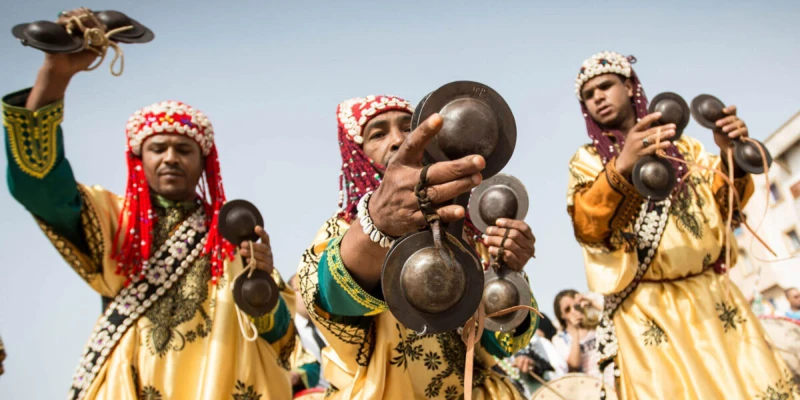
Andalusian Music: Andalusian music, originating from the cultural melting pot of Al-Andalus in medieval Islamic Iberia, is renowned for its intricate melodies and rhythms. This rich musical tradition incorporates a variety of instruments, including percussion, violin, and oud, creating a captivating and vibrant sound that reflects the diverse influences of the region.
Gnawa Music and Dance: The unique musical heritage of the Gnawa people encompasses a fascinating blend of rhythmic complexity and spiritual themes. Rooted in African traditions, Gnawa music resonates with soulful melodies and hypnotic rhythms. Often accompanied by mesmerizing dancing, Gnawa performances create an immersive and enchanting experience that transports listeners to a world of spiritual connection and musical exploration.
Tunisia
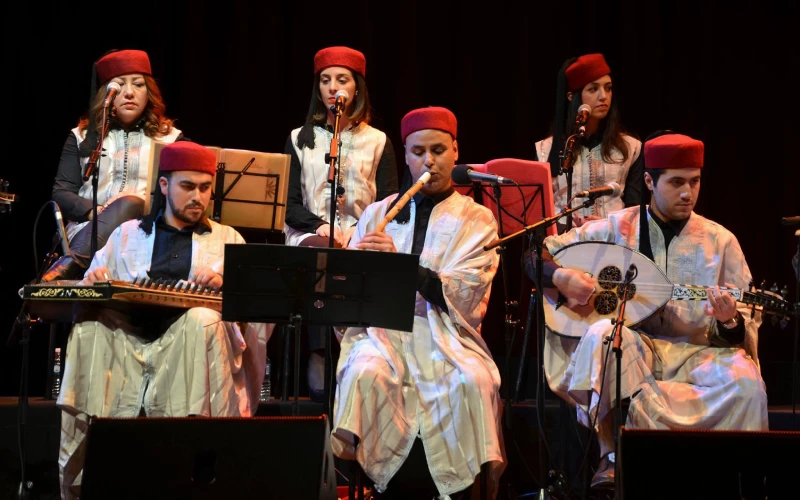
Malouf Music: Tunisia’s traditional Malouf genre is deeply rooted in the rich heritage of classical Arab-Andalusian music. With its enchanting melodies and intricate rhythms, this captivating genre often showcases the soulful sounds of the violin and oud within a small ensemble of instruments, creating a harmonious blend that resonates with listeners.
Stambali Dance: The mesmerizing trance dance, widely known as stambali, holds a profound connection to Sufi customs and rituals. This captivating dance form, performed during religious events, is characterized by rhythmic music that intertwines with the repetitive yet expressive gestures of the dancers. It serves as a spiritual and communal experience, immersing participants in a captivating journey of devotion and transcendence.
East Africa:
The traditional music and dance of East Africa, an area renowned for its cultural richness, are a complex tapestry of influences from many ethnic groups. Here are some highlights from a few East African nations’ traditional dances and music:
Ethiopia
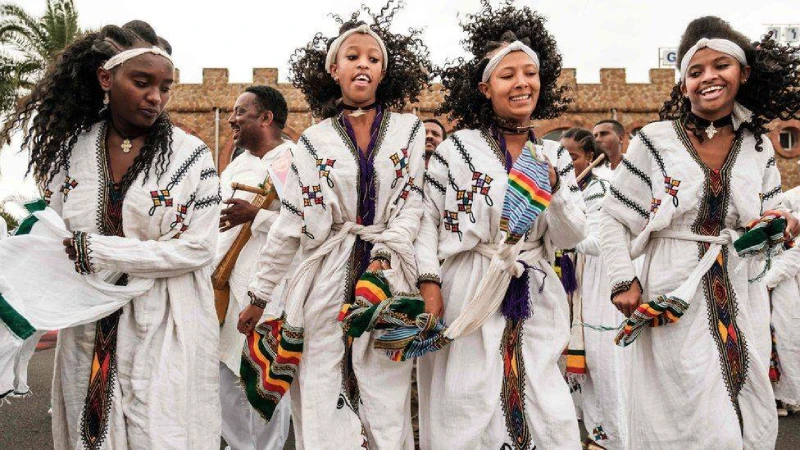
Ethiopian Orthodox Christian Music: Christian liturgical music has a rich and vibrant history in Ethiopia, deeply rooted in ancient traditions and practices. The soulful melodies and enchanting rhythms are often accompanied by the begena, a traditional harp, adding a unique and ethereal touch to the music. Hymns and chants, sung with devotion and reverence, hold a sacred place in religious rites, serving as a powerful means of spiritual expression and connection.
Eskista Dance: The ancient Ethiopian dance, known as Eskista, is a captivating display of grace and skill. It is characterized by intricate movements of the head and shoulders, perfectly synchronized with the rhythm of traditional Ethiopian music. Whether performed at weddings, festivals, or other joyous occasions, Eskista is a joyful celebration of culture and community. The dancers’ expressive gestures and infectious energy create an atmosphere of pure happiness, spreading joy to all who witness this vibrant form of artistic expression.
Kenya
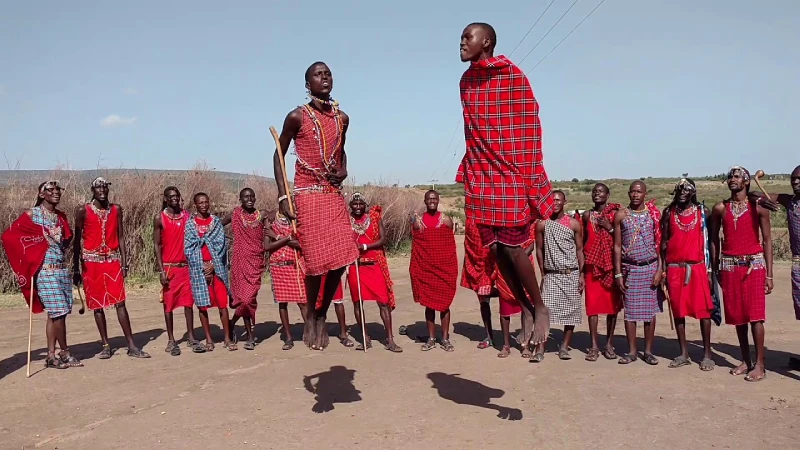
Benga Music: In Kenya, benga is a vibrant and energetic music genre that originates from the Luo community. It is characterized by the lively melodies of traditional and electric guitars, creating a captivating fusion of sounds. Over time, benga has evolved and embraced various influences, incorporating diverse elements from other musical traditions, resulting in a rich and dynamic musical experience.
Maasai Dance: The Maasai people’s dances are a captivating spectacle that forms an integral part of their cultural heritage. These dances come to life during special rites and joyous festivities, accompanied by rhythmic chanting and the mesmerizing jingling of jewelry adorned with colorful beads. Each movement and step carries deep symbolism, reflecting the Maasai’s connection with nature and their vibrant traditions. Witnessing a Maasai dance is an immersive experience that allows one to appreciate the grace, strength, and cultural significance of this ancient tradition.
Tanzania
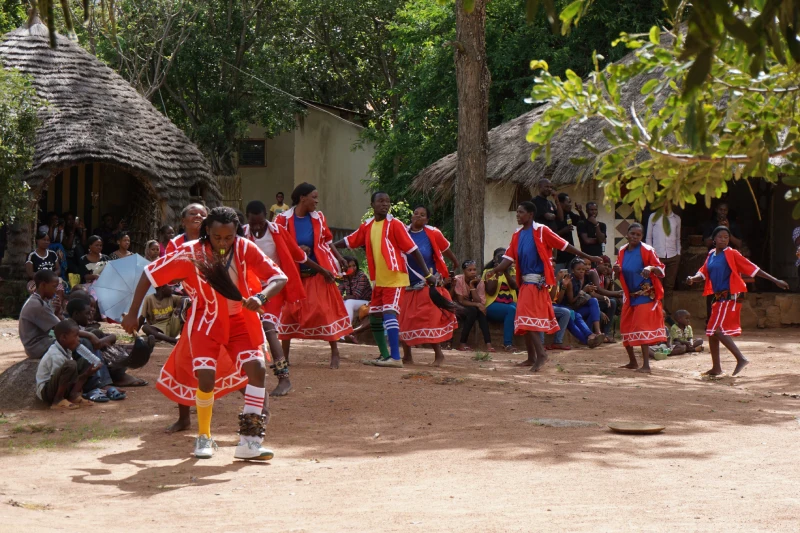
Taarab Music: Taarab, a genre influenced by Indian, Arabic, and Swahili civilizations, is a captivating blend of cultural inspirations. It seamlessly weaves together Western influences with traditional instruments, resulting in a melodious and harmonious sound. The music is enriched by poetic lines that are skillfully played in sync with the captivating melodies.
Ngoma Dance: In Tanzania, various ethnic groups embrace the vibrant tradition of Ngoma, a captivating dance genre. This rhythmic form of expression is deeply rooted in the cultural fabric of the country and is often associated with joyous group festivities. The dancers gracefully move in sync, their rhythmic motions reflecting the rich heritage and unity of the Tanzanian people.
Uganda
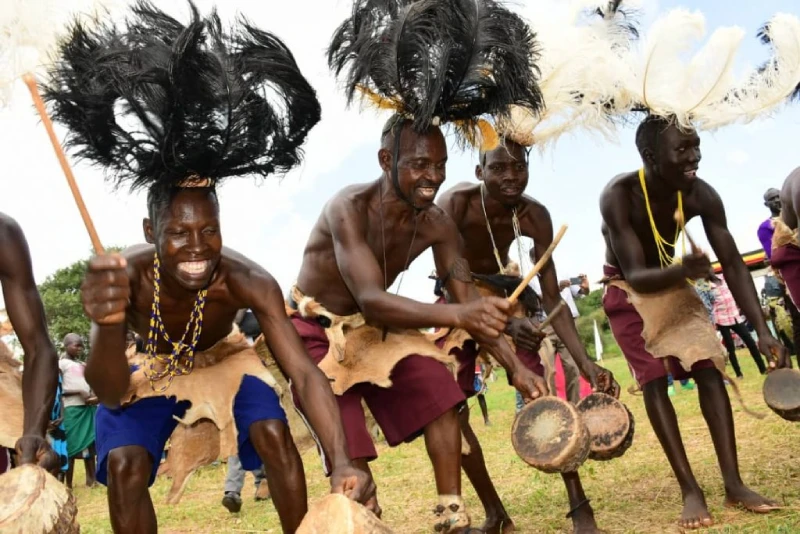
Acholi Bwola Dance: The Acholi people showcase their rich cultural heritage through the Bwola dance, a captivating performance that seamlessly blends intricate footwork, rhythmic drumming, and the occasional use of traditional instruments. This vibrant dance is particularly revered and often graces royal occasions, adding an extra touch of grandeur to the festivities.
Kadodi Dance: Among the Bagisu people, the kadodi dance holds a significant place in their traditional customs, as it forms an integral part of the Imbalu circumcision ritual. This spirited dance is characterized by the pulsating beat of drums, creating a mesmerizing rhythm that reverberates through the air. With graceful and synchronized movements, the dancers bring to life the cultural essence of the Bagisu community, infusing the ceremony with an aura of energy and celebration.
Central Africa:
The vast cultural mosaic of Central Africa is reflected in the variety of its indigenous peoples through traditional dance and music. Here are some highlights from a few Central African nations’ traditional dances and music:
Cameroon
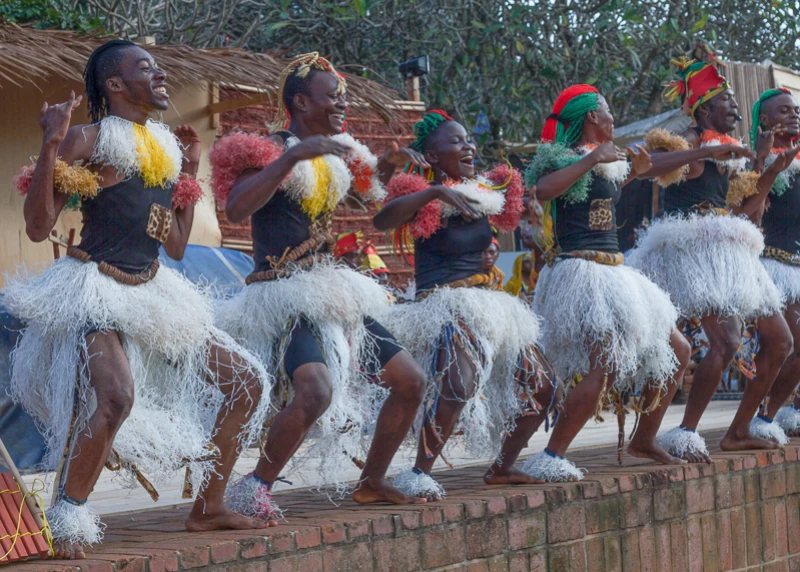
Makossa Music: In Cameroon, the lively and infectious music style known as Makossa effortlessly blends native rhythms with elements of jazz, highlife, and funk. Originating in the vibrant seaside city of Douala, Makossa has gained global recognition for its distinctive sound and irresistible beats.
Bikutsi Dance and Music: Rooted in the rich cultural heritage of the Beti people, the Bikutsi dance and music form is a captivating display of rhythmic expression. This dynamic dance style is characterized by its upbeat hip movements, accompanied by the enchanting sounds of traditional African instruments such as the balafon and drums. The pulsating rhythms of Bikutsi create an immersive experience that transcends boundaries and invites everyone to join in the celebration of music and dance.
Republic of the Congo
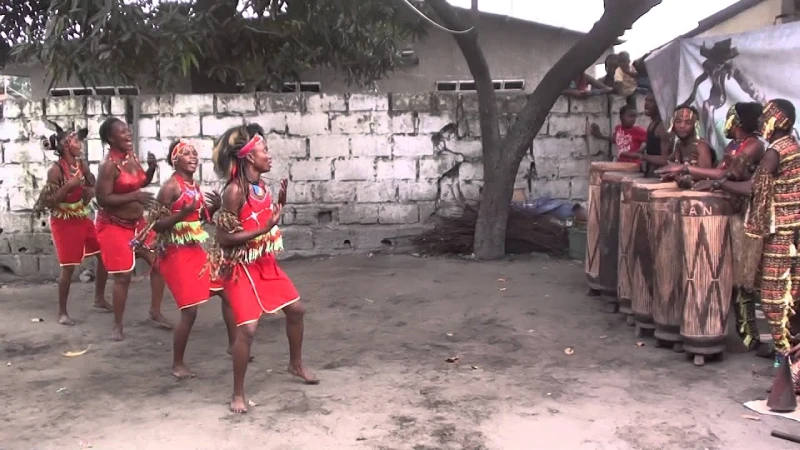
Soukous Music: The genre known as “soukous,” or “lingala,” originated in the Democratic Republic of the Congo in the late 1930s and has since spread throughout Central Africa. With its infectious dance beats, intricate guitar solos, and captivating rhythms, soukous has become synonymous with the vibrant music scene of the region.
Ndombolo Dance: The Congolese dance known as Ndombolo emerged in the 1990s as a popular dance style closely associated with soukous music. Characterized by its energetic and dynamic movements, Ndombolo incorporates quick hip and foot motions that perfectly sync with the rhythmic patterns of the music. It quickly gained popularity not only in the Congo but also across Africa, captivating audiences with its lively and expressive performances.
Democratic Republic of the Congo (DRC)
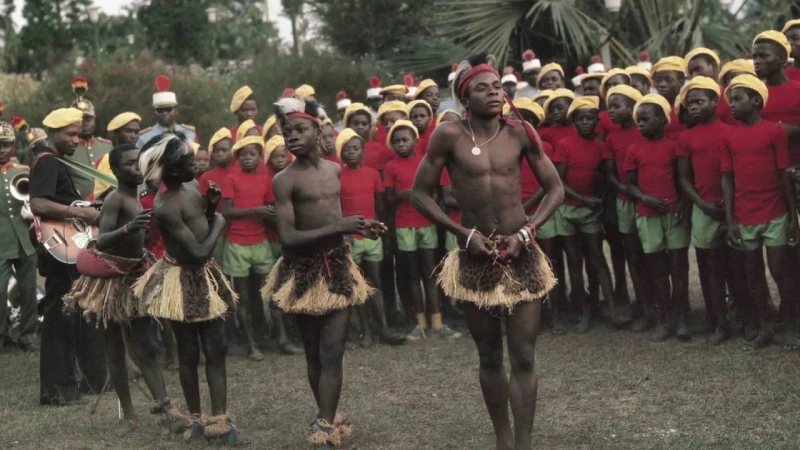
Rumba and Congolese Rhumba: The vibrant and infectious Congolese Rumba has been greatly shaped by the cultural tapestry of the Democratic Republic of the Congo (DRC). This captivating genre, characterized by its lively dancing beats, seamlessly blends the rich African heritage with the rhythmic influences of Cuban music.
Lingala Music: Deeply intertwined with the Congolese rumba, Lingala, the musical language of the region, adds an extra layer of depth and beauty to the melodies. The Lingala lyrics, often imbued with expressive and poetic qualities, evoke a range of emotions and connect deeply with the listeners. To complement the enchanting music, Lingala dance forms gracefully accompany the rhythms, creating a captivating visual spectacle.
Gabon
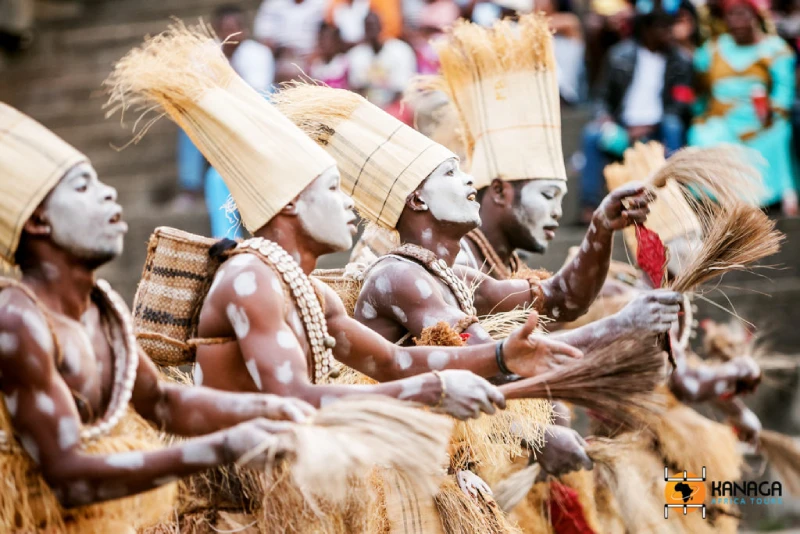
Bwiti Music and Dance: The Fang people, indigenous to Central Africa, follow the Bwiti religion, a spiritual practice deeply rooted in their culture. This ancient tradition encompasses not only religious beliefs but also vibrant music and captivating dance forms. During Bwiti rites and ceremonies, the Fang people engage in traditional dances accompanied by enchanting songs. The rhythmic beats of sacred instruments like the mungongo, a harp-like instrument, resonate in harmony with the dancers’ movements, creating an immersive and transcendent experience. Through these rituals, the Fang people connect with their ancestors and celebrate their cultural heritage.
Igoboka Dance: In the beautiful country of Gabon, the Igoboka dance takes center stage during various ceremonies and festive occasions. This traditional dance, deeply embedded in Gabonese culture, is a mesmerizing display of rhythmic rhythms and coordinated motions. Dancers gracefully synchronize their steps and gestures, bringing to life the rich cultural narratives and traditions of the Gabonese people. The rhythmic beats of drums and other traditional instruments provide a lively soundtrack, energizing both the dancers and the audience. The Igoboka dance is more than just a performance; it is a celebration of Gabon’s vibrant cultural identity and a source of pride for its people.
Southern Africa:
The traditional music and dance of Southern Africa have their roots in the history and customs of the region’s numerous ethnic groups, and the region boasts a rich and varied cultural legacy. Here are some highlights from a few Southern African nations’ traditional dances and music:
South Africa
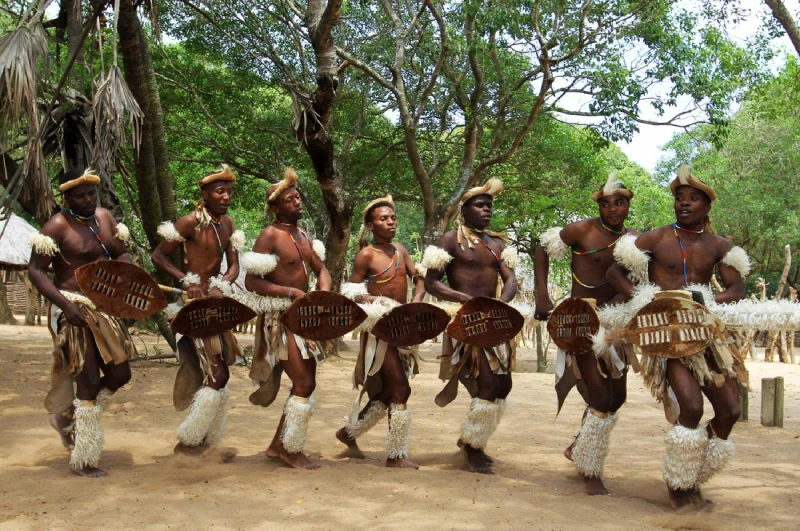
Zulu Music and Dance: The lively and vibrant musical heritage of the Zulu people is an integral part of their culture. It encompasses various elements such as rhythmic drumming, energetic dancing, and mesmerizing vocal harmonies. The Zulu dances are widely celebrated and known for their distinctive styles, including the powerful and disciplined military dance known as “Indlamu” and the exuberant and joyful dance called “Umqombothi,” which is often accompanied by traditional Zulu beer.
Gumboot Dance: Originating from the mining areas, the Gumboot dance is a unique form of expression that showcases the resilience and creativity of the people. Dancers wear rubber boots that serve as instruments, producing rhythmic sounds through tapping, stomping, and slapping movements. The dance reflects the struggles and hardships faced by the miners, transforming them into captivating rhythmic rhythms that enthrall audiences and tell a story of perseverance and unity.
Zimbabwe
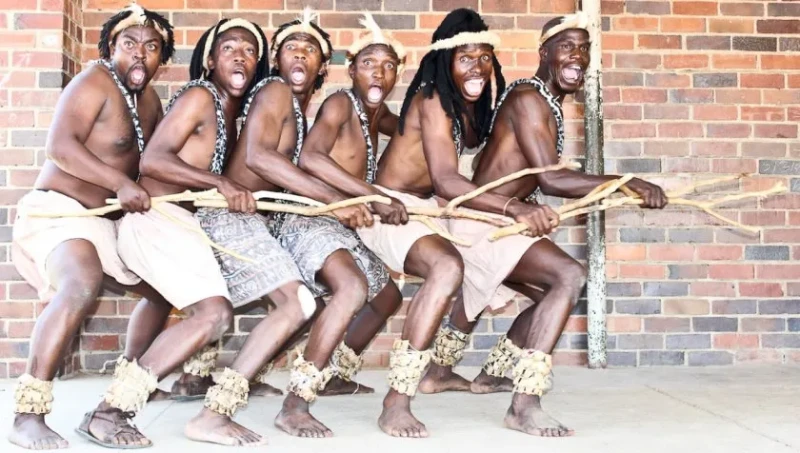
Mbira Music: The thumb piano, known as the mbira, holds a significant place in the rich tapestry of traditional Zimbabwean music. It is deeply intertwined with the cultural heritage of the Shona people, who skillfully wield this instrument during their sacred rites and rituals. The resonating notes of the mbira resonate through the air, creating a mesmerizing ambiance that transports listeners to a world steeped in tradition and cultural significance.
Jerusarema Dance: Among the array of captivating traditional dances performed by the Shona people, the Jerusarema dance stands out as a vibrant and spirited display of their cultural expression. This dynamic dance form is characterized by its circular movements, symbolizing unity and harmony within the community. The rhythmic beats of percussion instruments, such as drums, reverberate in the background, adding an energetic and infectious element to the performance. As participants gracefully move to the rhythm, the Jerusarema dance becomes a captivating celebration of tradition and community spirit.
Botswana
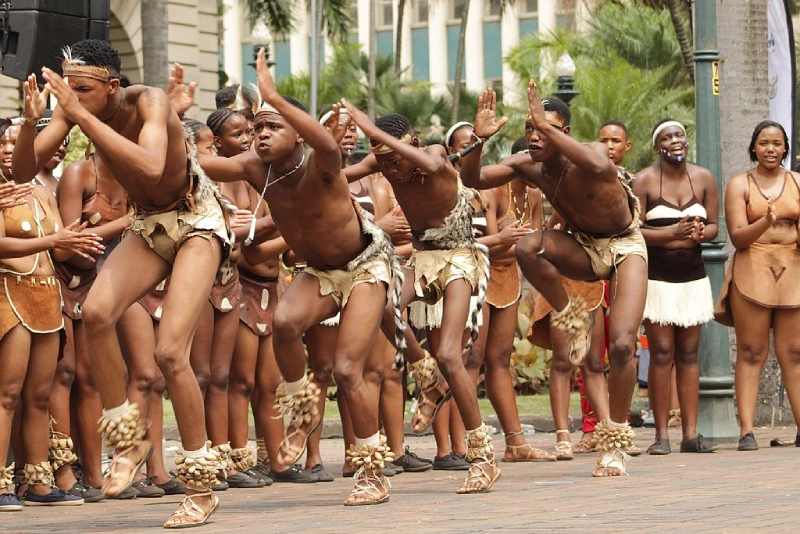
Tswana Music and Dance: The Tswana people have a rich musical heritage with fascinating traditional instruments like the mouth bow (segaba) and drum (thobate). The segaba, played with the mouth, creates mesmerizing melodies that fill the air. Meanwhile, the thobate drum sets the rhythm and adds vibrancy to the music.
But it’s not just the music that’s captivating. Tswana traditional dances are truly a sight to behold! These dances showcase the culture and heritage of the Tswana people, with intricate body and footwork that tells stories and expresses emotions. The dancers move in perfect harmony, captivating audiences with their grace and skill.
One dance that stands out is the setapa dance. It’s known for its synchronized gestures and movements and is often performed during festivities and social events. The rhythmic beats of the drums and the graceful movements of the dancers create a captivating spectacle that brings joy and unity to all who witness it.
Namibia
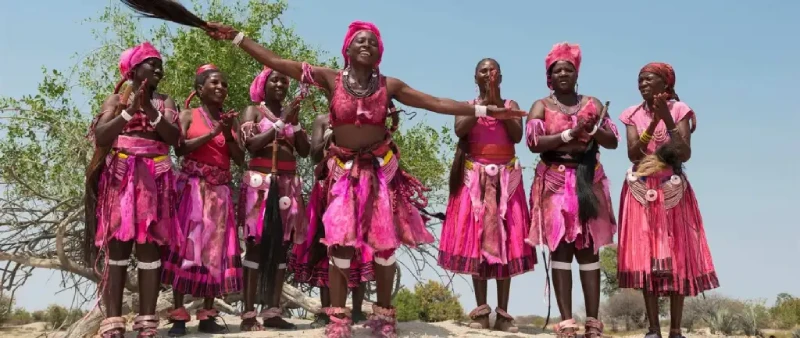
Ovambo Music and Dance: The Ovambo people, with their vibrant cultural heritage, possess a rich and diverse musical history. Their traditional dances, accompanied by the enchanting sounds of rattles and drums, showcase the rhythmic beauty and storytelling of their community. Each Ovambo group embraces its unique dance traditions, reflecting the rich tapestry of their customs and beliefs.
Herero Dance: The Herero people, known for their distinctive dance styles, captivate audiences with their colorful costumes and mesmerizing rhythmic motions. These dances, often performed during festivities and celebrations, embody the spirit of joy, unity, and cultural pride within the Herero community. With each graceful step and lively movement, the Herero people celebrate their heritage and express their collective identity.
West-Central Africa:
The region known as West-Central Africa, which includes nations in both West and Central Africa, is home to several ethnic groups with distinctive cultural practices. Here are some highlights from a few West-Central African countries’ traditional dances and music:
Congo (Republic of the Congo)
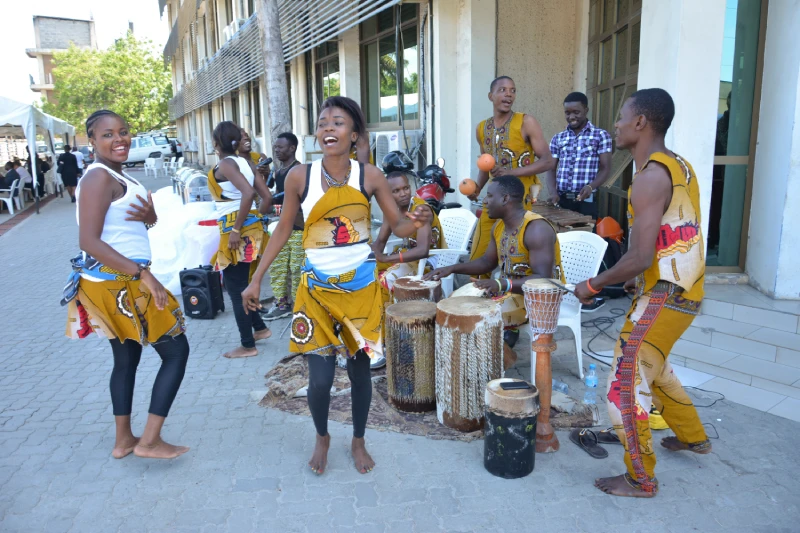
Soukous and Rumba Music: Among the diverse music styles in the Democratic Republic of Congo, two popular genres stand out – Congolese Rumba and Soukous. Often referred to as Lingala music, these vibrant and rhythmic styles have not only captivated the hearts of Congolese people but have also greatly influenced the music scene across Africa. With their infectious beats and energetic melodies, Congolese Rumba and Soukous continue to be a driving force in African music, spreading joy and getting people on their feet to dance.
Ngoma Dance: Across the Congo, various ethnic groups showcase their rich cultural heritage through the traditional dance form known as Ngoma. This captivating dance is often accompanied by mesmerizing drumming rhythms and vibrant, colorful movements. Ngoma dances are a celebration of community, storytelling, and ancestral traditions, providing a glimpse into the diverse cultural tapestry of the Congo. The fusion of rhythmic beats, graceful movements, and vibrant costumes creates an enchanting spectacle that leaves spectators in awe and invites them to experience the spirit and vitality of Congolese culture.
Equatorial Guinea
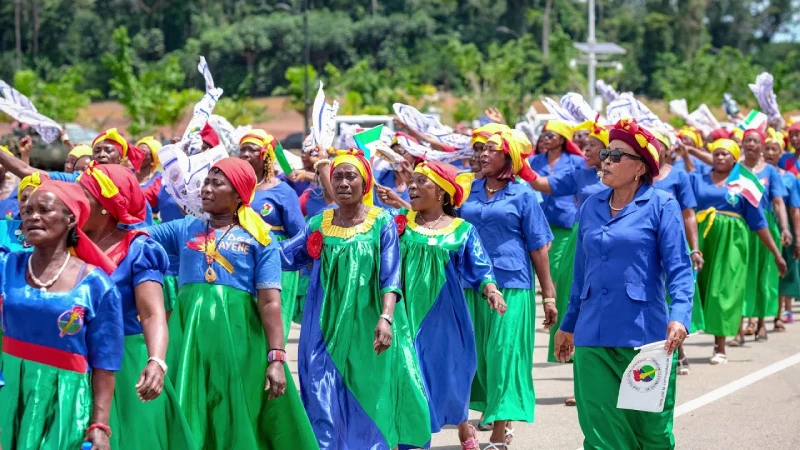
Fang Music and Dance: The Fang people, an ethnic group residing in various regions of Equatorial Guinea, have a rich cultural heritage encompassing vibrant traditional dances and a diverse range of music styles. These artistic endeavors play a significant role in enhancing the social fabric of the community, enriching celebrations, and adding depth to various rituals and gatherings. The captivating rhythms, intricate movements, and colorful costumes of Fang music and dance reflect the unique traditions and customs that have been passed down through generations, creating a captivating and immersive experience for both participants and spectators alike.
Sao Tome and Principe
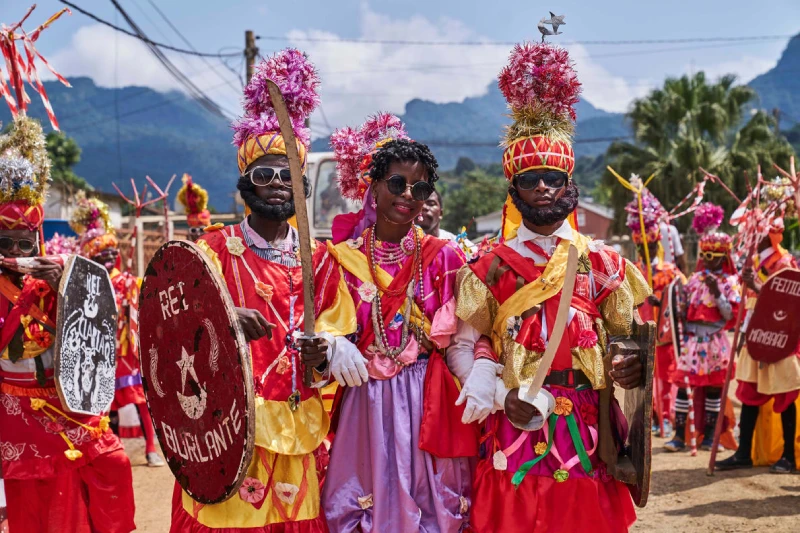
The Dance of Roda, a traditional dance in Sao Tome and Principe is a captivating spectacle that is often performed at various events and lively celebrations. This vibrant dance form showcases rhythmic footwork accompanied by graceful circular motions, creating a mesmerizing display of cultural expression and artistic finesse. With its rich history and energetic movements, the Dance of Roda continues to enchant audiences, immersing them in the vibrant traditions of this beautiful island nation.
Horn of Africa
The Horn of Africa, located in East Africa, is widely celebrated for its rich and diverse cultural traditions. This vibrant region encompasses nations such as Djibouti, Ethiopia, Somalia, and Eritrea, as well as portions of Kenya and Sudan. The captivating traditional dances and music in the Horn of Africa have deep roots in the historical, religious, and cultural tapestry of the numerous ethnic groups that comprise this remarkable area. Each ethnic group brings its own unique flair and expression, making the cultural landscape of the region even more fascinating. From the graceful movements of the Ethiopian eskista dance to the energetic rhythms of the Somali dhaanto, the Horn of Africa is a treasure trove of artistic traditions that continue to captivate and inspire.
Ethiopia
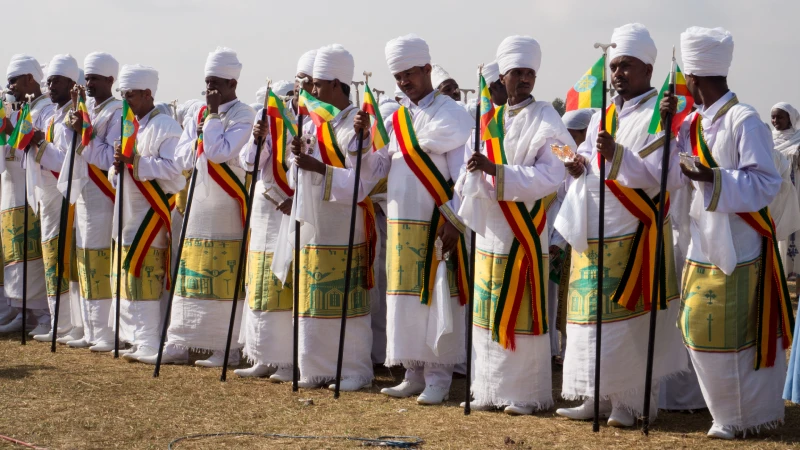
Ethiopian Orthodox Christian Liturgical Music: Religious music in Ethiopia has a rich and ancient history deeply intertwined with the Ethiopian Orthodox Tewahedo Church. This unique musical tradition encompasses a wide range of vocal and instrumental compositions that are performed during religious rites and ceremonies. The mesmerizing sounds of traditional Ethiopian instruments, such as the kebero, a drum with goat skin, and the begena, a beautifully crafted harp, create a powerful and spiritual atmosphere, enhancing the worship experience for believers.
Eskista Dance: The captivating Eskista dance holds a significant place in Ethiopian culture and is a joyous expression of celebration and festivity. This traditional dance is characterized by intricate movements of the head and shoulders, showcasing the agility and grace of the dancers. Often performed during cultural events, weddings, and other joyous occasions, Eskista brings people together, fostering a sense of community and shared heritage. Through its vibrant and energetic movements, Eskista embodies the spirit and cultural identity of Ethiopia, captivating both participants and spectators alike.
Somalia
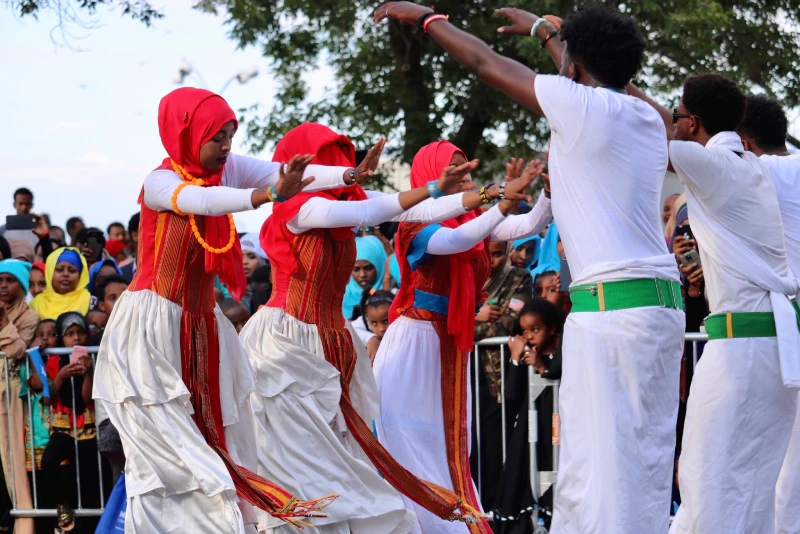
Dhaanto and Buraanbur Music: Traditional Somali dances like dhaanto are performed with lively drumming and singing, creating a vibrant and energetic atmosphere. The rhythmic beats of the drums set the pace while the dancers gracefully move to the music. Buraanbur is a kind of poetry that is frequently sung along with the music, adding a poetic touch to the performance.
Tambura and Oud Instruments: Instruments like the oud, a stringed instrument with a resonant and melodic sound, and tambura, a lyre-like instrument known for its rhythmic accompaniment, are frequently heard in traditional Somali music. The oud adds a rich and soulful tone, while the tambura provides a captivating and harmonious backdrop to the melodies. Together, these instruments create a captivating and immersive musical experience that celebrates the rich cultural heritage of Somalia.
Eritrea
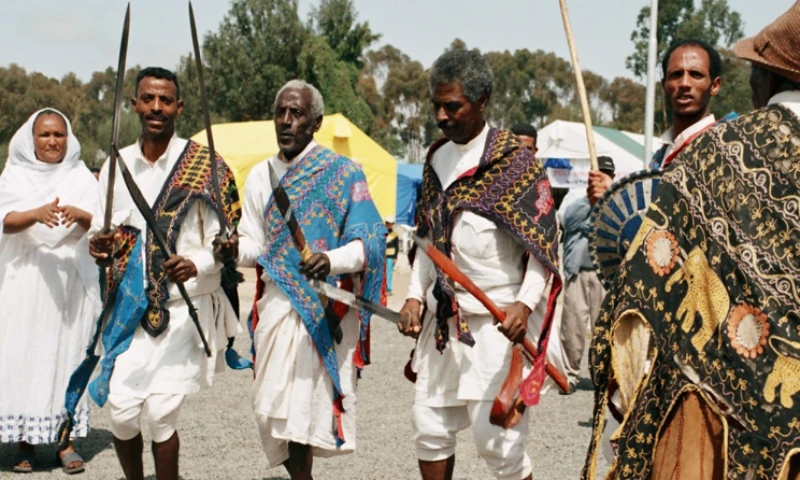
In Eritrea, the Tigrigna and Tigre people have vibrant musical customs that are deeply rooted in their culture. These distinct musical traditions are characterized by the enchanting melodies produced by traditional instruments such as the kebero, a traditional drum, and the krar, a unique lyre-like instrument. These instruments add a unique and captivating element to the music, creating a mesmerizing auditory experience.
When it comes to dance, the Tigrigna and Tigre people have a plethora of traditional dances that showcase their rich cultural heritage. These beautiful dances are often performed during festivals and other cultural gatherings, where the rhythmic movements and graceful gestures captivate the audience. The dancers display their skill and passion, telling stories through their movements and preserving their cultural identity through the art of dance.
Djibouti
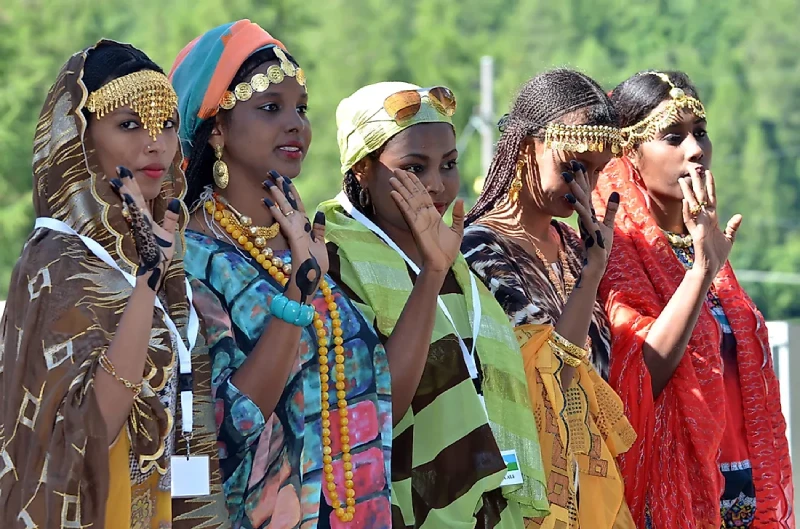
Dahabshiil Music: The cultural legacy of Djibouti has been shaped by a rich tapestry of Somali, Afar, and other ethnic groups. Traditional Somali music, known as “Dahabshiil,” holds a mesmerizing allure as it weaves enchanting melodies with poetic lyrics, transporting listeners to distant lands and evoking a deep sense of nostalgia.
Afar Dance: The Afar people, known for their vibrant traditions, showcase a kaleidoscope of unique and captivating traditional dances. These dances, often performed during festive celebrations and social gatherings, are a vibrant display of rhythmic movements, intricate footwork, and expressive gestures that reflect the rich cultural heritage of the Afar community. Accompanied by traditional instruments that resonate with the spirit of their culture, these dances exude an infectious energy that brings people together in joyous celebration.
Conclusion:
African dance and music are incredible! They’re deeply rooted in rich cultural traditions and always evolving to include modern influences. Today, talented African artists combine traditional elements with different genres, creating a vibrant and diverse musical scene that celebrates the continent’s cultural legacy. From mesmerizing rhythms to captivating choreography, African dance and music captivate audiences worldwide, showcasing the beauty and diversity of African artistic expression. It’s truly amazing!
Author
Book your fondest memory here
Popular Posts
Exploring Denver’s Craft Beer Scene
If there’s one thing Denverites know how to do, it’s…
Do I Need a Passport to Go to Hawaii?
Hawaii, also known as the “Paradise on Earth,” is a…
Complete Guide to Scuba Certification in Florida and the Great Lakes
Imagine gliding through vibrant coral reefs in Florida or uncovering…
Categories
- Best Places (19)
- Destinations (19)
- Experiences (21)
- Photography (1)
- Travel (48)
- Travel Products (7)
- Trip Style (8)
Search With Tags
Join Our Newsletter
Get Your Daily
Dose
Of Travel Inspiration
"*" indicates required fields

